Stories > Looking Through Global Lens
Looking Through Global Lens
Singaporean photographer Russell Wong shares how he learnt to celebrate his heritage, thanks to his much vaunted Hollywood experience.
BY RUSSEL WONG
early four decades ago, even when I was just starting out as a professional photographer, I dreamt of being on the world stage and shooting with A-list personalities for top global publications such as Time magazine. At the time, this might have sounded out of depth for a novice photographer from Singapore, a small island state that hadn’t yet made its mark on the world map in the way it does now.
I left Singapore to study in the US at the age of 16. There was less awareness about different countries and cultures as there is now. When you go to a different country, inevitably you will find a new cultural cognisance with aspects that might shock you. When I first landed in the US, among the first learnings I embraced was that there are many ways to achieve your goals. This applies to both the big objectives in life such as education and raising a family, as well as mundane everyday tasks such as cooking.
In Singapore, we often emphasise a standard approach in which not only the outcome of a task but the process to get there is important. Whereas in the West, people have a more liberal and lenient outlook towards carrying out a given task. There is no right or wrong; it is a by-product of how societies are culturally attuned to behave, both in theory and practice.
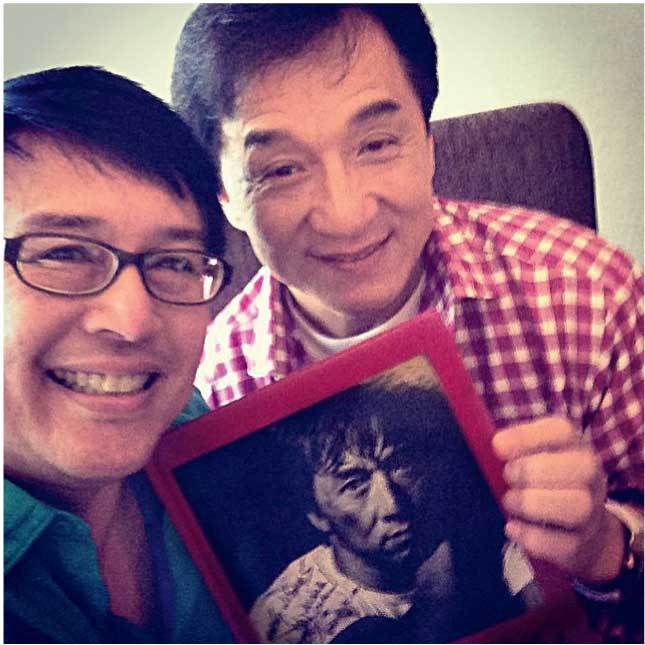
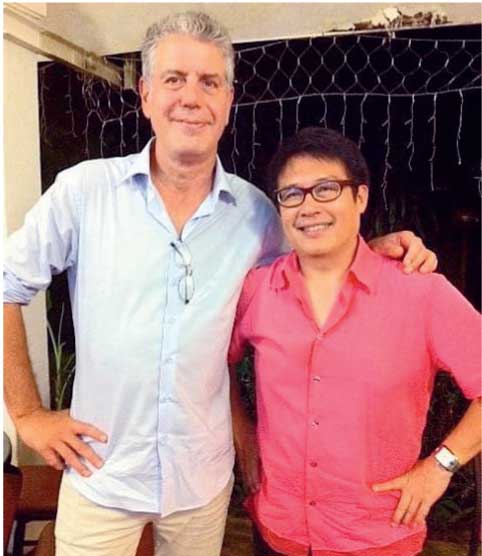
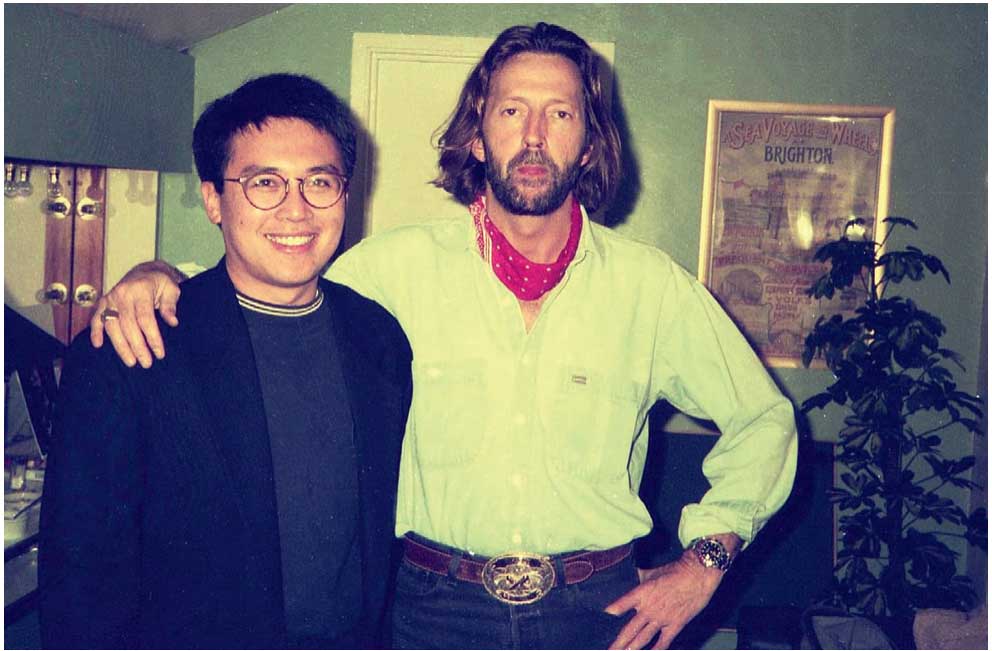
Russel Wong with Hong Kong actor Jackie Chan, American chef Anthony Bourdain, and English singer Eric Clapton – a few of the A-list stars whom the Singaporean photographer has shot for top global publications.
THE BEST OF EAST AND WEST
Having experienced the cultural norms of East and West, now I ponder on the various options and then pick the best way to complete a task in the course of my work. Often it’s a hybrid of both – taking the best of each philosophy. You could argue that it is still an innately Singaporean trait – to adopt the best global practises and make them work for you.
As an 18-year-old commercial photographer, I shot my first cover with Lord Sebastian Coe, the former British middle distance running legend and the head of the 2012 London Olympics, for the Track and Field News magazine. Since then, I have always wanted to work internationally, rather than just regionally.
They don’t label you as pompous in the West for dreaming big or talking about your achievements. In fact, it’s encouraged. There is a quintessential American phrase that best describes this mindset: “I’ve a bigger fish to fry!” It was not an easy start by any means. I once shot the passport photos of the staff at Arnold Scwarzenegger’s company, but my next job was to shoot Mickey Rourke’s portrait. Yet, keeping the faith has served me well over the years as I went on to photograph international A-list celebrities from diverse fields such as films, fashion, gastronomy and sports.
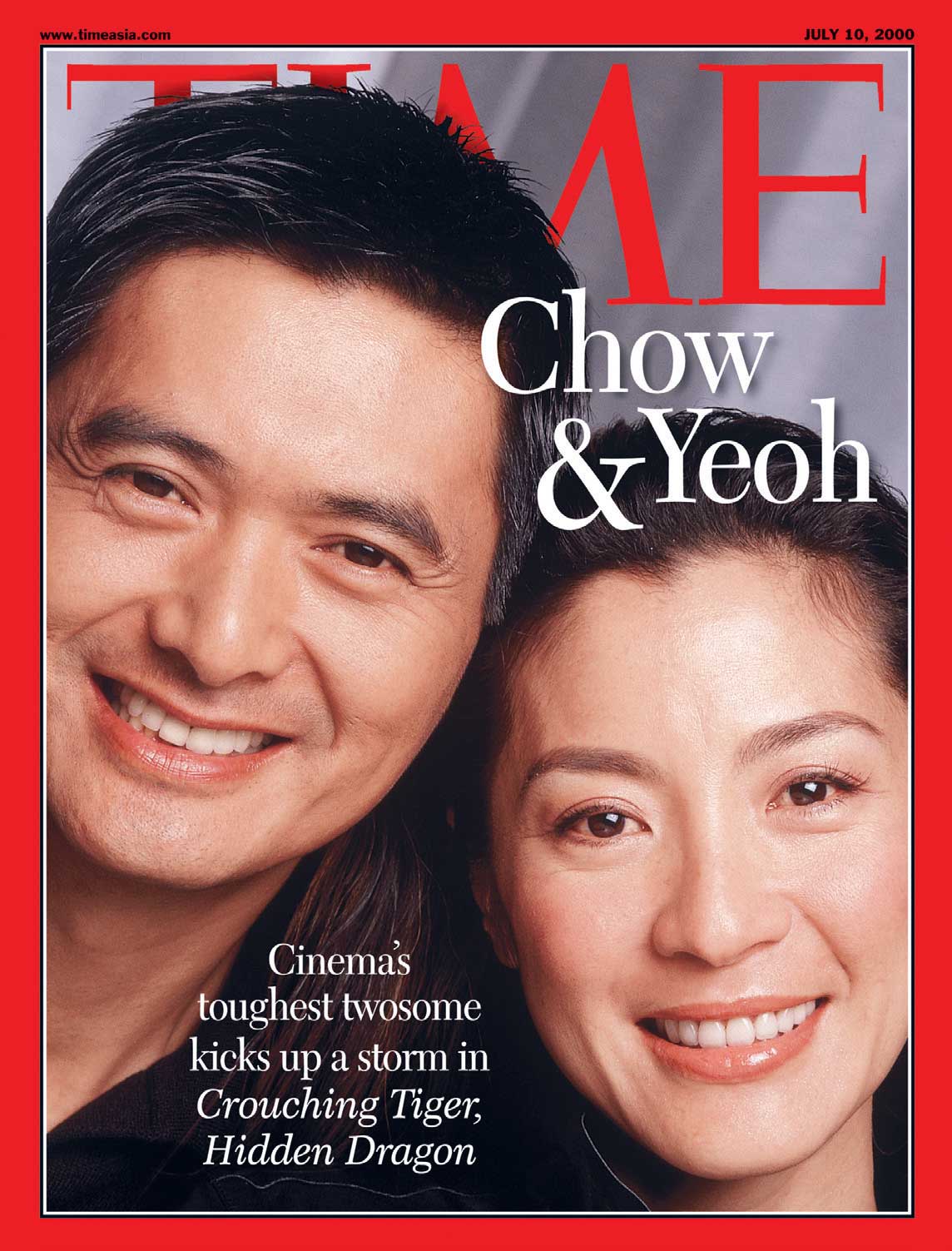
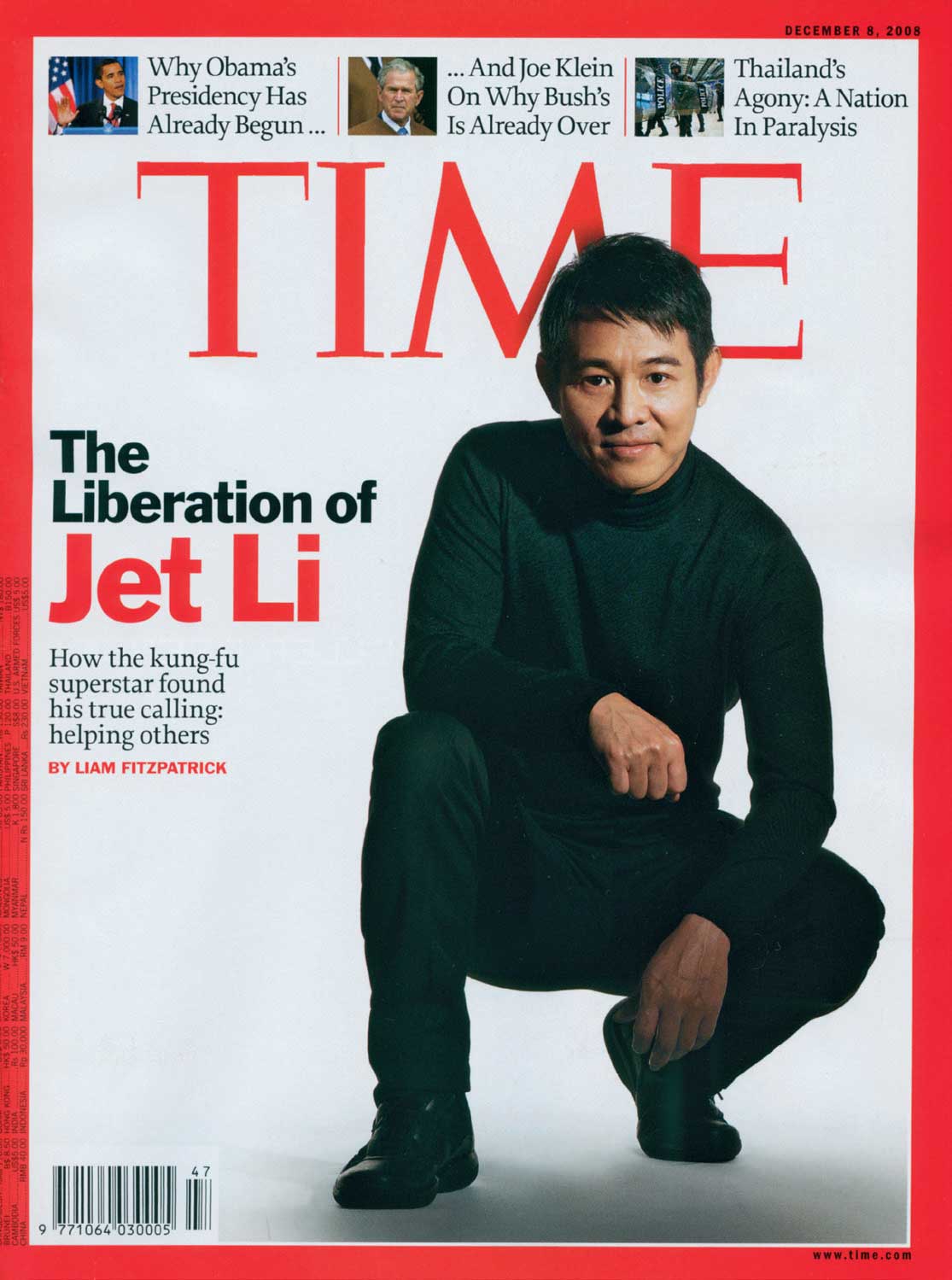
Wong has shot as many as 17 Time magazine covers featuring global personalities such as Michelle Yeoh, Chow Yun Fat and Jet Li.
“We have a plethora of talent here, but I find a lot of them tend to be undervalued because we are exposed to fewer opportunities due to our size. This is why foreign collaborations are important.”
On the other hand, in Asia, the general perception is that you are expected to be selfdeprecating. I don’t necessarily agree with the notion that recognising one’s own talent is self-serving. In fact, not doing so can impede your progress because it can negatively affect your psyche. Confidence, not braggadocio, can be a good thing.
Having said that, my father – who is an overachiever himself – instilled in me strong Asian values and the importance of remaining humble and true to your roots, no matter how successful you become. I come from a typical Singaporean Peranakan (people of mixed Chinese, Malay and European ancestry) family and we speak Malay, Cantonese and English at home. Growing up in the Siglap area in the eastern part of Singapore, there was always a strong kampung (Malay for village) community spirit. It was also an environment that emphasised hardwork and ethics – values that kept me grounded even as my network expanded with each photoshoot. I often reminded myself that I needed to keep building a better portfolio. After all, you are only as good as the last photo you take. There is a saying among Peranakans that if they ever feel a family member is becoming too arrogant, they will promptly bring them back to reality. Ultimately, I have realised that I can never be more of a photographer than a human being.
ENCOURAGING CREATIVE PURSUITS
Our society and way of thinking have evolved. Gone are the days when young Singaporeans would only think of a desk job in a corporate environment in banks and law firms. The younger generation is a lot more entrepreneurial in nature. But I feel we need to encourage a culture where we can tell the creatively inclined that it is perfectly all right to pursue their passion while making a living from it – rather than making them settle for what is considered a more pragmatic career. We must also help them compete on an international level. Sometimes I see great reviews written about average exhibitions, which do not help the development of the industry at large.
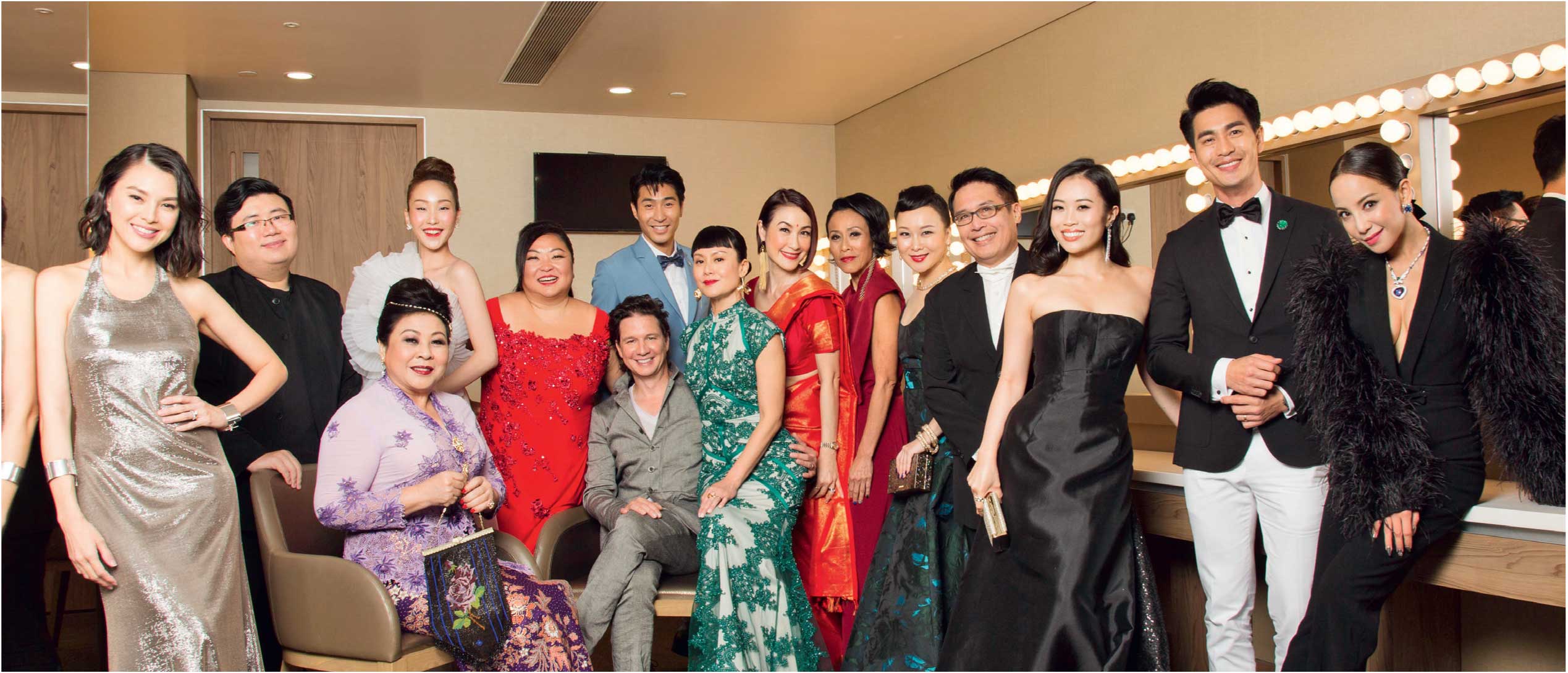
(fourth from right) with the cast of Hollywood blockbuster Crazy Rich Asians, which featured many Singaporean actors among an exclusively Asian cast.
After finishing my photography course, I took my portfolio to several magazines in New York but did not get any commission. I experienced many rejections early on in my career, prompting me to seek the advice of Antonio Lopez, a celebrated fashion illustrator and an academic at my school, the ArtCenter College of Design Pasadena in Los Angeles.He motivated me to keep honing my craft and learning from the best.
I researched fashion photographers such as Helmut Newton, Irving Penn and Richard Avedon, all of whom are known for having shot print campaigns for luxury fashion brands and portraits of celebrities, and whose work I admire. It was during this phase that I travelled to Milan, the fashion capital of the world, and ended up staying for five months. I was inspired by the career trajectory of American photographer George Holz, who started his career by moving to Europe, assisting Newton and becoming a sought-after fashion photographer in his own right.
Over the next few years, I continued to seek feedback from industry experts. One such person that I reached out to was the late Ted Pillsbury, director of the Kimbell Museum in Texas. Upon my invitation, he visited my solo show at the Singapore Art Museum in 2005. I was deeply heartened by his remark: “This exhibition is amazing because it feels like it could be placed in any of the top creative centres of the world.”
I liken my attitude to the way Singapore brings in the top global talents to learn from them. However, you must know which parameters to use to define “the best”. Even the criteria to pick someone to learn from is important, because a person who did something great 50 years ago might have been progressive then, but may be obsolete in the contemporary context.
PRODUCING WORLD-CLASS TALENTS
We have a plethora of talent here but I find a lot of them tend to be undervalued because we are exposed to fewer opportunities due to our size. This is why foreign collaborations are important. To produce world-class talents in Singapore, we cannot do just domestic-level learning.
Sometimes, it takes an outsider to see certain nuances and the beauty in our culture. I have always felt that being away for eight to 10 years was good for me because it helped me to see things from a fresh perspective.
For instance, I worked extensively with the late American chef Anthony Bourdain, who was fascinated with our hawker culture and took great pleasure in visiting little-known places across the island – from a teh tarik (Malay for hot milk tea) stall in Arab Street to a roast duck noodles eatery in River Valley. Over a period of 13 years, we worked together on several of his TV shows including No Reservations and The Layover, during which he insisted on discovering the most obscure hawker places in Singapore. He didn’t come here looking for fine dining but more authentic experiences – which ultimately taught me that we have to look inwards while being open to the outside world.
I have also worked closely with Hong Kong actor Jackie Chan whose popularity transcends boundaries. He not only respects the creative opinions of others but is willing to try them out. I once shot him in the middle of a busy Hong Kong traffic junction at night. We only had a few seconds to get the shot before the traffic flow resumed once the traffic lights turned green. By then, it had also started raining – but he made sure we got the shots we needed. For me, this was a good lesson in humility and in respecting others’ professional opinions.
A more recent collaboration between Singaporean and international artistes is that of the Hollywood film Crazy Rich Asians. The blockbuster was a fantastic opportunity for our local talents to shine on an international stage. Here were some of our popular local actors such as Pierre Png, Fiona Xie and Tan Kheng Hua, among others, who were part of a truly international cast with actors from the US, the UK, Malaysia, the Philippines, Hong Kong, Japan and Australia. These Singaporean actors have been in the business for over 20 years, but this was their moment of reckoning. It was also the first time that all the actors – both local and international – were on a Hollywood set that had an all-Asian cast, and no one felt like they were a minority. At the same time, the foreign actors were amazed by the diversity in our small but multicultural country. Even within the Chinese community, they discovered dialect groups such as the Hokkien- and Teochew-speaking people.
“ANTHONY BOURDAIN DIDN’T COME HERE LOOKING FOR FINE DINING BUT MORE AUTHENTIC EXPERIENCES – WHICH ULTIMATELY TAUGHT ME THAT WE HAVE TO LOOK INWARDS WHILE BEING OPEN TO THE OUTSIDE WORLD.”
With the film set in Singapore, much attention was paid to our food, culture, landscape and ethnic enclaves. In particular, Nelson Coates, the American production designer, did an amazing job of researching and capturing the Peranakan details in the film that are distinct to Singapore and parts of Malaysia. He dived into stylistic details such as the colours of the nonya kueh, floral motifs on the wallpaper, lacquered chairs and glazed ceramic tiles. It was a huge learning experience for the team – including myself, as I had worked on the publicity campaigns for the production.
Singaporean actors such as (Ng) Chin Han, Fann Wong and Kheng Hua are now working in Hollywood. It is great that they have been able to successfully cross over. I hope such examples will inspire more Singaporeans to dream big and keep an open mind towards global opportunities while celebrating our own multicultural heritage.
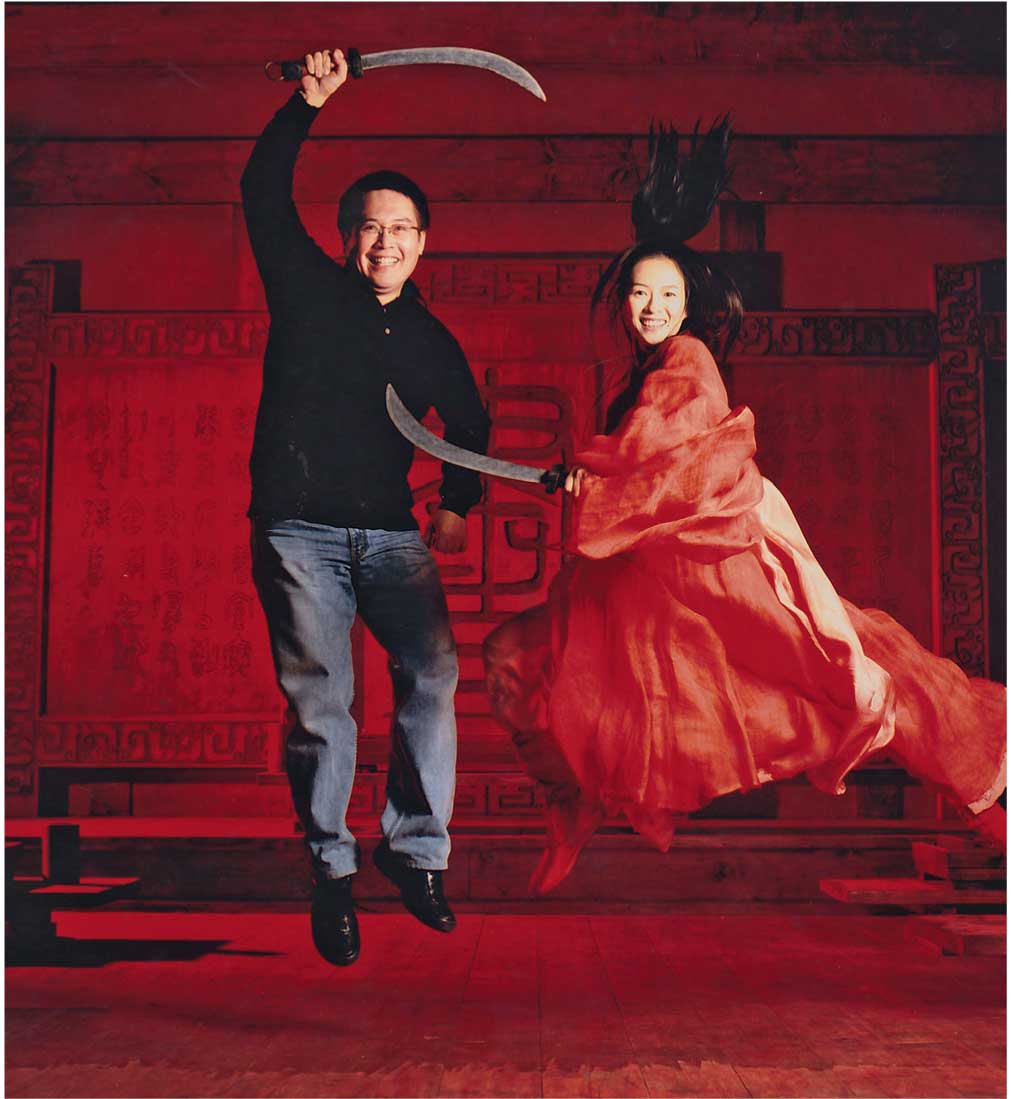
Chinese actress Zhang Ziyi of Crouching Tiger, Hidden Dragon fame, has worked extensively with Wong.
ABOUT THE AUTHORRussel Wong is a Singaporean photographer known for shooting the portraits of international celebrities from diverse fields such as fashion, films, sports and gastronomy. Some of the wellknown names that he has collaborated with include actors Richard Gere, Tom Cruise, Jackie Chan, Demi Moore, Ken Watanabe, Jet Li, Michelle Yeoh, Faye Wong, Mickey Rourke, and Aishwayra Rai; supermodels Kathy Ireland, Jerry Hall and Hanis Hussey; and sports personalities Carl Lewis and former Russian chess grandmaster and world champion Anatoly Karpov. He also holds the distinction of having shot celebrity portraits for 17 Time magazine covers. As one of Hollywood’s soughtafter photographers, he has shot the publicity stills for iconic films such as Crouching Tiger, Hidden Dragon and House of Flying Daggers. |
